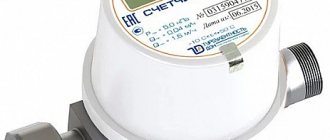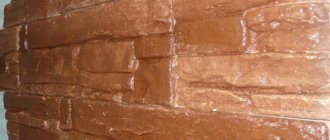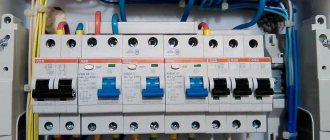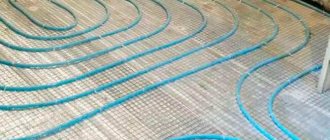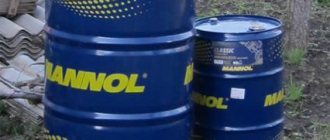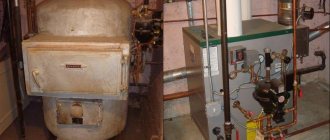1 / 1
Do you remember how at a young age we collected pieces of carbide on construction sites or behind garages, supplemented the find with a plastic bottle of water and played demolitions? It was a fun and dangerous childhood. Now we have grown up and know that such things must be used strictly for their intended purpose in compliance with all safety measures.
Let's remember our chemistry lessons: acetylene
– a colorless flammable gas with a pungent odor. Unsaturated carbon of the alkyne class with the formula C2H2. The substance is explosive and capable of self-ignition under certain conditions. When burning, the flame reaches a temperature of 3150 °C. This is enough to transform even refractory metals into a liquid state. Therefore, acetylene gas is ideal for welding and cutting metal structures.
Acetylene welding
First, a short excursion into history. The patent for the oxy-acetylene welding torch dates back to 1903. Interestingly, its design has not fundamentally changed in our time. Acetylene welding in industry in 1906, after acetylene generators of sufficient reliability appeared. At that time, the electric arc method of joining metals was already known, but acetylene welding confidently gained its position and is still actively used today.
Previously, welders had to obtain their own acetylene. Calcium carbide was poured into a generator tank filled with water. As a result of the reaction, gas was released, which flowed through the hose into the burner. Oxygen was also supplied here from a separate cylinder, acting as a catalyst. The preparation process took a long time, but the remaining carbide could be reused. Nowadays everything is simpler. It is enough to buy a cylinder already filled with acetylene gas.
Why do you need nitrogen pressure testing of an air conditioner?
Before filling the climate system with refrigerant, its pipelines are tested for strength.
Pressure testing of air conditioners is carried out using nitrogen pumped into the freon line with excess pressure. This helps to check the tightness of the line between the indoor and outdoor units, as well as the strength of the connections. Connecting a nitrogen cylinder to the system
Application
Acetylene-oxygen mixture is used for welding almost all metals
, including ferrous, non-ferrous and their alloys.
But there are exceptions
, which include steel:
- chromium and high-chromium;
- chromium-nickel;
- molybdenum;
- chrome molybdenum;
- high carbon.
Acetylene gas welding is actively used in construction and installation processes, but it has become especially widespread when laying pipes. By adjusting the power of the flame, you can join, cut or perform gas-flame cleaning of metal.
Preliminary preparation
Before soldering copper pipes, you need to prepare them.
Surface cleaning
The quality of the solder bundle depends on the degree of cleanliness of the surfaces being soldered. Any residues of any other substances or dirt prevent the solder from penetrating and reduce its fluidity. All this leads to the fact that the substance is not distributed evenly, the surface is not completely treated with solder. Often, because of this, it is not possible to achieve high-quality work and the connection fails.
There are two methods of metal cleaning: chemical and mechanical. The outer part of the pipe and the inside of the fitting are cleaned of oxide film, dirt and impurities using a metal brush. In addition, it is possible to use steel wool or sandpaper. After this, the solder is well distributed over the surface.
Nylon-based cleaning wipes are easy to use.
A significant advantage that distinguishes them from a metal brush or sandpaper is that after cleaning the surface with a napkin, no cleaning residue remains. After using nylon-based wipes, there are no abrasive crumbs or steel residues on the pipe.
The chemical method involves the use of an acid that reacts with oxides. You can use flux, which degreases the surface and actively fights oxides.
Using flux and assembling parts
Flux should be applied to the cleaned surface. It is applied to the section of pipe that will be connected by a fitting or socket, distribute the flux well on the surface, an excessive amount of flux can negatively affect the connection. But you should also not use flux on the inside of the fitting. Regulate the paste consumption.
After applying flux, you need to connect the parts correctly to avoid foreign particles sticking to the surface. If soldering will be done later, it will be much better if the parts are already assembled. It is necessary to turn the pipe all the way, thereby checking its connection and flux distribution. Afterwards, remove the remaining flux with a cloth prepared in advance for work. The connection can be heated.
For low-temperature soldering, fluxes are used, in the list of compositions of which aluminum chlorides are not the least important. Fluxes are hazardous substances, so care must be taken to ensure that excess does not remain on the outside of the pipe. Such carelessness can lead to metal corrosion and leakage. After soldering, inspect the surface again, there will be some flux on it due to the thermal effect. Any flux that appears on the pipe must be removed again.
For high-temperature soldering, borax is used instead of flux. It is mixed with water until it reaches a thick porridge consistency. You can use special pastes for high-temperature soldering. If you choose copper-phosphorus solder, then you do not need to purchase flux for it, it is already present in the composition. It is better to use a kit from one manufacturer, and coordinate this with the type of soldering.
Bell-shaped thickening
For connections in everyday life, either fittings for soldering copper pipes or bell-shaped thickenings are used.
It is better to choose the option with a bell-shaped thickening, so you will only need to apply one seam at the junction of the pipes.
- The ends of the parts are processed with a rolling pipe cutter. The cut must be smooth and strictly perpendicular.
- The ends of the pipes are removed from the chamfer using a chamfer remover. The inside and outside surfaces are cleaned.
- One section of pipe is clamped in a vice, and a pipe expander is inserted inside. Then you need to carefully expand the inner diameter of the pipe so that the outer diameter of the second pipe fits into it.
Before repair work, do not forget to remove plastic fragments from structures, otherwise they will melt and be unusable.
Acetylene welding: operating technology
During the welding process, the edges of the parts being joined are melted and mixed. Additionally, filler material is introduced. After hardening, a strong seam is formed. In order for acetylene to burn completely and not smoke, a catalyst is needed - oxygen. Both gases from separate cylinders are supplied through hoses to the burner and mixed. The optimal mixture proportion is 45% acetylene gas and 55% oxygen
. Without oxygen, acetylene does not burn completely and the flame will smoke.
Preparation for welding
First of all, clear your workspace of everything unnecessary. Move flammable materials to a safe distance or securely secure them. The surfaces to be welded must be cleaned of dirt, rust and oxides. If necessary, edit, mark, bend and assemble them in advance.
The quality of metal joining depends on three
main factors:
- Flame power is selected depending on the properties (thermal conductivity and melting point) and thickness of the metal. As power increases, fuel gas consumption increases. The mode is regulated by selecting burners (from G1 to G4) and tips for them of different sizes.
- The diameter of the filler wire is measured in millimeters and is calculated as follows: measure the thickness of the metal being welded, divide by two, add 1 mm to the resulting value.
- The welding angle depends on the thickness. The larger the angle, the dumber the angle and vice versa. The operating range of the torch tilt relative to the part is from 10 to 80 degrees. The surface is always heated at a right angle. And the final stage, at which the crater is formed, is done with a minimum angle - this eliminates the risk of burning through the metal.
Working with the burner
Both gas cylinders are equipped with reducers that regulate the outlet pressure. It is optimal to set values up to two atmospheres. Large values make it difficult to adjust the flame. Open the valves on the cylinders, set the desired pressure, then you can light the burner. First, open the acetylene supply valve and ignite the gas escaping from the nozzle. Then the second valve is smoothly unscrewed, letting in oxygen, and the flame is adjusted.
Types of flame
A burning torch consists of several parts that can be distinguished visually. The shortest and closest to the burner is the core. Next comes the recovery (work) zone. The outer largest part is the torch, which is responsible for heating the metal.
Depending on the ratio of the amount of acetylene and oxygen, the flame is divided into three types:
- Normal - gas proportions 1:1 or 1:1.1. All three zones are clearly visible, the core has a smooth, rounded end. This is the most common type. Used when working with various steels and non-ferrous metals.
- With an excess of acetylene, a green halo appears above the core, the working zone of the flame is poorly visible, and the torch itself is yellow. Suitable for working with cast iron.
- Excess oxygen - all zones shorten, the core turns pale and becomes cone-shaped. The flame is noisier than usual and takes on a bluish-violet hue. Applicable for welding brass.
Methods of driving the torch and introducing filler wire
In order for a weld pool to form, the workpiece must be heated. The flame is directed at a right angle so that the core is 1-3 mm from the surface. When the metal acquires a light yellow color, the bath is ready, you can begin to form the seam.
Acetylene welding technology involves moving the torch in two ways: from right to left (towards you) and from left to right (away from you).
In the first case
the flame is directed
forward from the seam
, the additive is located in front of the burner. When working in this way, it is convenient to visually control the seam. Applicable for thin-walled parts (up to 5 mm).
Second way (on my own)
used when working with metal with a thickness of more than 5 mm. The burner flame is directed towards the seam. This allows it to slow down and improves quality. However, due to the fact that visual inspection is complicated, such a connection will not look very neat.
The additive is fed either directly into the weld pool or carried over the seam. The burner is slowly advanced along the joint in a transverse arcing motion. The core should not touch the weld pool.
The final stage of acetylene welding: how to close the torch and cylinders
Acetylene is switched off first on the burner and only then oxygen. Next, you need to remove the remaining gas from the hoses. Close the cylinders and open the valves on the burner. Wait until the hissing stops and the needle on the pressure gauge shows zero. Then be sure to close all valves.
Looking for a leak
If a stain of antifreeze remains under the car after parking, it means there is a leak in the cooling system..
Before removing the cooling radiator or air conditioner, you should make sure that all pipes and the expansion tank housing are in order. The heat exchanger of the interior heating system is also checked.
Before dismantling, you need to drain the liquid from the system . The removed radiator is carefully inspected in good lighting. If the damage cannot be seen, all holes are plugged with tight plugs and the heat exchanger is immersed in water. The emerging chain of bubbles will indicate the location of the leak. If you increase the pressure by connecting one of the pipes to the compressor hose, you can detect a leak faster.
Firstly, the superconductor remains in this state until a certain critical magnetic field is exceeded (i.e., up to a certain current density). This is for transformers. Secondly, metals transform into a superconducting state at a temperature much lower than the boiling point of nitrogen. High-temperature superconductors are synthesized PP (i.e., not commonplace Si, Ge, GaAs.) On the topic: nitrogen has a low boiling point, but its heat is low. Therefore, it is more profitable to use much simpler substances - alcohol, water, etc. Of course, this is about cases when you just need a good heat sink, and not just low T.
Equipment and protective equipment
For welding with acetylene you will need a minimum of equipment, which is relatively inexpensive:
- Gas cylinders. Acetylene gas cylinders are usually painted white, while oxygen cylinders are blue.
- Pressure regulating reducers with check valves to protect against backlash.
- Two hoses for supplying gases to the burner.
- Gas burner with a mouthpiece of the required size.
Burners
Acetylene torches vary in power, which depends on the replacement tip. The size is selected depending on the thickness of the metal being welded. The minimum size is zero, the maximum is five. The larger the nozzle diameter, the more gas mixture is supplied to the weld pool, which means the metal is heated stronger and deeper.
Never buy gas welding tools from little-known companies. Your safety depends on its quality. A good choice for manual acetylene welding at home would be the KEDR G-2 Malyutka torch with tips ranging in size from 0 to 3 or the low-power KEDR G-2A-02 Malyutka torch. Both are equipped with replaceable tips for adjusting power and allow you to perform all types of flame metal processing - from heating and soldering to welding and cutting.
Means of protection
There is a risk of skin or eye damage during the welding process. Flying molten metal particles can cause serious injury. To avoid this, always wear a thick fabric welding suit. A large amount of splashes gets on your hands. They need to be protected first. Ordinary work gloves will not work here; they are easily burned and cannot withstand even small sparks.
Welding gaiters must reliably protect hands from temperature and abrasive effects, but at the same time not hamper movement and provide sensitivity. Welder gloves (gaiters) produced by the Russian company Kedr correspond to these qualities as closely as possible. They are durable and comfortable.
There is no UV radiation during gas flash welding. But it is not recommended to weld in ordinary welding glasses. This kind of protection is becoming fashionable, especially among welding bloggers. But you won't care about fashion trends after the first drop of molten metal hits your face. Take a closer look at full-fledged welder masks from the manufacturer KEDR. They are convenient and reliable. And those who care about design will be able to choose the right option for themselves from the variety offered on the site. At the same time, you can order delivery not only in Moscow, but also in all regions of the country.
Classification of copper products
Copper pipes in Europe are mainly metric; 6, 8, 10, 12, 15, 22, 28, 42 and 48 mm are also found in larger diameters, but they can also be inch:
| inches | mm |
| 1/4 | 6.35 x 0.8 |
| 3/8 | 9.52 x 0.8 |
| 1/2 | 12.7 x 0.8 |
| 5/8 | 15.9 x 0.8 |
| 3/4 | 19.1 x 0.8-0.9 |
Copper marking in Russian marks: the letter “M” is used to denote copper. Next are numbers showing the degree of purity in% (00 - highly pure, 0 - pure, 1, 2, 3 - technically pure). The last element of the marking is a letter indicating the method of copper production: (k - cathode, y - cathode remelted, b - oxygen-free, p - deoxidized, f - deoxidized with phosphorus).
| Copper grade | M00 | M0 | M1 | M2 | M3 |
| Purity | 99,99 | 99,95 | 99,90 | 99,70 | 99,50 |
Copper grades M1p, M2p and M3p, with a total impurity content identical to copper grades M, M2 and M3, differ from them in that they are more completely deoxidized and the oxygen content in them is reduced from 0.05 - 0.08% to 0. 01%. Therefore, they additionally contain from 0.002% to 0.012% phosphorus. The M1f copper grade differs from M1r in an even greater amount of phosphorus from 0.012% to 0.04%, for greater deoxidation and, accordingly, a complete absence of oxygen.
CHEMICAL COMPOSITION OF COPPER ACCORDING TO GOST 859 (%)
| Copper grade | Cu+Ag (%) | Impurities, no more (%) | ||||||||||
| Bi | Sb | As | Fe | Ni | Pb | Sn | S | Zn | O | P | ||
| M1f | 99,90 | 0,001 | 0,002 | 0,002 | 0,005 | 0,002 | 0,005 | 0,002 | 0,005 | 0,005 | — | 0,04 |
| M1r | 99,90 | 0,001 | 0,002 | 0,002 | 0,005 | 0,002 | 0,005 | 0,002 | 0,005 | 0,005 | 0,01 | 0,012 |
| M1 | 99,90 | 0,001 | 0,002 | 0,002 | 0,005 | 0,002 | 0,005 | 0,002 | 0,004 | 0,004 | 0,05 | — |
| M2 | 99,70 | 0,002 | 0,005 | 0,01 | 0,05 | 0,2 | 0,01 | 0,05 | 0,01 | — | 0,07 | — |
| M3 | 99,50 | 0,003 | 0,05 | 0,01 | 0,05 | 0,02 | 0,05 | 0,05 | 0,01 | — | 0,08 | — |
The use of various grades of copper in plumbing products is determined by GOST 52318, and in Europe - EN 1057. In construction products: GOST 495-92, in Europe - EN 1172. Typically, water pipes contain 99.90 copper and are excellent for home brewing purposes.
Explosion hazard
A dangerous feature of acetylene is its tendency to spontaneously ignite. This can happen at a temperature of 300 °C and a pressure of 150-200 kPa (1.5-2 atmospheres). When storing and transporting acetylene, follow safety precautions:
- Store and use acetylene cylinders only in an upright position. Keep them away from heating devices and protect them from direct sunlight.
- Use only valves and pressure regulators specifically designed for acetylene.
- Monitor acetylene levels in the air. Concentrations above 0.5% are explosive.
- Open the cylinder only with a non-sparking key.
- Avoid prolonged contact with copper or silver.
If a fire occurs, try to remove gas cylinders that have not yet had time to heat up from the danger zone. Cool the remaining ones by pouring water over them. If the gas coming out of the cylinder catches fire, close the valve and cool with water. In case of a strong fire, it is dangerous to be near the cylinders; it is better to extinguish the fire from a safe distance.
Safety precautions
- First of all, you need to remember that copper conducts heat strongly, and you should not solder a part shorter than 30 cm by simply holding it in your hands, this can lead to burns !
- When soldering, copper becomes very hot and acquires very unpleasant properties, causing very severe burns in a split second when touched! For example, many can pick up a coal from a fire and throw it from hand to hand without harming themselves, but with copper such a trick will not work, a burn is guaranteed!
- During soldering, flux may drip onto exposed parts of the body; rinse off immediately with water, otherwise there may be a chemical burn!
- While working, you should not be wearing synthetic clothing; do not forget that you are working with fire, hot metal, and flux containing acid! Synthetics tend to ignite and melt easily!
- Do not put flux in your eyes, nostrils, mouth, ears or genitals!
- When soldering, open the window, do not breathe in large amounts of smoke from the burnt Flux!
Pros and cons of acetylene welding
The first and undeniable advantage is mobility. You can cook even in an open field without connection to electricity, and almost all types of metals. There is no need for operational joints, even if a rotation seam is made with a large distance to the wall. You can weld parts made of different metals together. The flame temperature is adjustable - this allows you to reduce deformation and accurately select modes. There is no strong metal spattering.
The disadvantages include the fact that the heat from the flame spreads over a large area of the part and can change its properties. High carbon steels cannot be welded with acetylene. It is also better to entrust parts with a thickness of more than 5 mm to electric welding. When welding with an overlap, metal tension is generated, which can subsequently cause deformation. And, of course, there is a danger of explosion.
Features of the copper soldering process
The essence of soldering is to tightly connect two elements of a copper pipeline by heating and melting the binding material - solder.
After cooling, the tin alloy forms a reliable, non-dismountable structure, which will later be used to transport coolant, cold water, and refrigerant.
The process of soldering copper tubes when installing water heating equipment. Heating is carried out with a manual gas torch; tin wire is used as solder.
In everyday life, low-temperature or, in other words, soft soldering is usually used, in which the flame temperature from a gas burner does not exceed 450 ° C. Low-melting solder is used for it, and the maximum pipe diameter is no more than 110 mm.
Soft capillary soldering is suitable for equipment in water supply and heating systems, but is not used for gas transportation.
